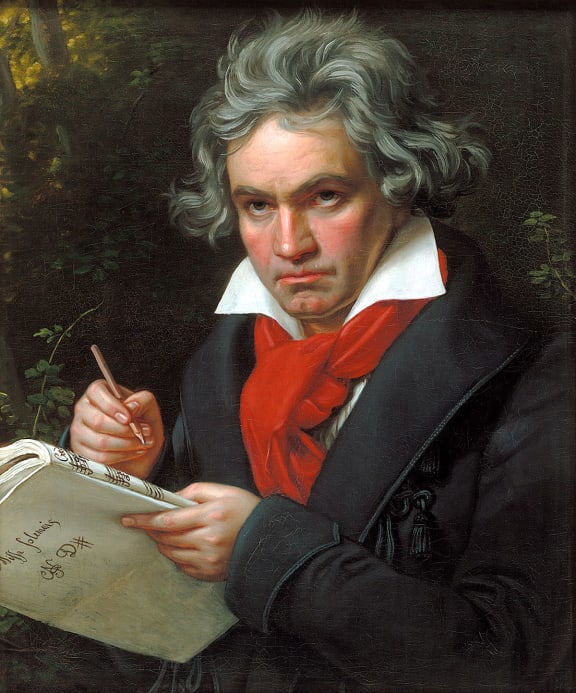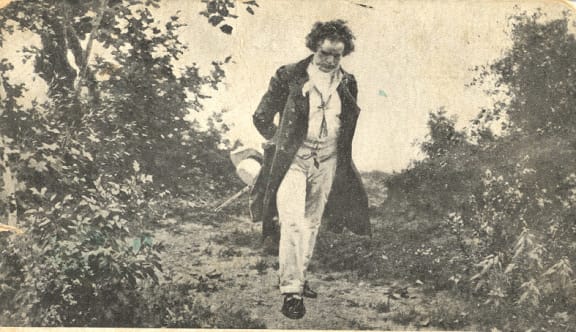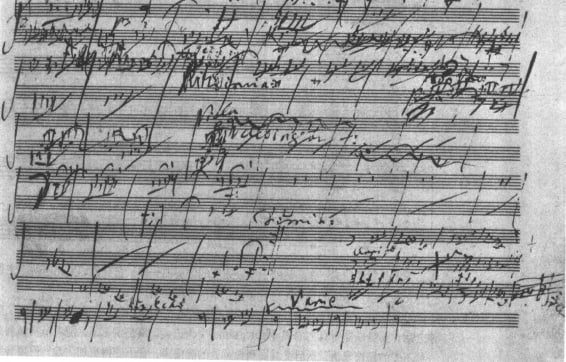In Beethoven's anniversary year, the NZSO presented two of his best-loved works live from the Michael Fowler Centre in Wellington. The performance features Diedre Irons (piano), and the New Zealand Symphony Orchestra conducted by Hamish McKeich.
Programme:
BEETHOVEN: Piano Concerto No 5 in Eb Op 73, Emperor;
BEETHOVEN: Symphony No 6 in F Op 68, Pastoral
Awarded an MBE and an ONZM for her outstanding contributions to music as both a stunning performer and dedicated educator, Diedre Irons' formidable talent and musicality brings out every nuance of Beethoven’s Emperor Piano Concerto. Opening with virtuosic runs in the piano, contrasted with a gentle second movement before the vigorous, dance like third movement, Beethoven’s, last piano concerto truly deserves the grand title of 'Emperor'.
Beethoven’s Sixth Symphony is a musical flowering of Beethoven’s love of nature. As Beethoven said: “No one can love the country as much as I do. For surely woods, trees, and rocks produce the echo which man desires to hear.” As such, Beethoven follows a well-established tradition of pastoral or nature-inspired programme music – that is, music written to act out or musically depict a certain programme, or non-musical story or scenario.
BEETHOVEN: Piano Concerto No 5 in E flat Op 73, Emperor

Beethoven by Joseph Karl Stieler, 1820 Photo: Public Domain
For as long as there have been cities, there have been people desperate to escape them.
But it wasn’t always possible to escape the chaos of Vienna, especially when it was under siege. While Beethoven was writing his Fifth Piano Concerto, Napoleon’s armies were bombarding the city, and the composer’s lodgings were right in the middle of the battle. The noise often prevented him from concentrating on his music.
“The whole course of events has affected me, body and soul”, he said “Nor can I have the enjoyment of country life, so indispensable to me…what a disturbing, wildlife around me! Nothing but drums, cannons, men, and misery of all sorts!”
No-one knows exactly how the concerto came to be known as the ‘Emperor’. Beethoven certainly didn’t give it that title. He once said of Napoleon: “It is a pity I do not understand the art of war as well as I do the art of music. Then I would conquer him!”
It’s well known that Beethoven originally dedicated his Eroica Symphony to Napoleon, and then angrily tore off the dedication page when Bonaparte declared himself emperor. Interestingly, both the Third Symphony and the Fifth Piano Concerto are in the same ‘heroic’ key of E flat.
Even though he was only 39 and lived another 18 years, this was the last concerto that Beethoven wrote. It’s the culmination of his work in a form that places two forces: solo and orchestra, into dramatic opposition.
Recorded 8 July 2020, Michael Fowler Centre, Wellington by RNZ Concert
Producer: David McCaw
Engineer: Darryl Stack
BEETHOVEN: Symphony No 6 in F Op 68, Pastoral

Beethoven walking in nature Photo: Public Domain
Beethoven lived in the noisy and polluted early industrial era. To escape the rabble, those with means would pay for a few quiet hours at a spa. Beethoven’s solution was to escape to the countryside around the city for long hikes.
“No one can love the country as much as I do,” he said, “for surely woods, trees, and rocks produce the echo which man desires to hear.”
Beethoven also enjoyed rustic music. Amateur bands playing Austrian folk dances brought him a lot of joy, even when their playing was a little ropey.
In his Pastoral Symphony, Beethoven wanted to do more than assemble a collection of natural sounds, he wanted to capture the way nature made him feel.

Part of Beethoven's manuscript for Pastoral Symphony Photo: Public Domain
Rather than race to a big finale, this music gently meanders and wanders. He sets a relaxed pace in the opening movement. The second movement features more musical painting with a babbling brook and bird calls – we’ll hear the nightingale represented by the flute, the quail is the oboe and the cuckoo by the clarinets.
The folk bands that Beethoven enjoyed so much make an appearance in the third movement. Beethoven was amused by the tendency of village musicians to fall asleep during their performances, wake with a start and get a few vigorous blows in before nodding off again. He includes this humorous scene after the horn calls, and the hijinks continue until the mood darkens and storm clouds gather.
The fourth, 'storm' movement starts with pizzicato droplets and builds to one of the most violent of all musical thunderstorms. Thundering timpani, string tremolos and strident dissonances and lightning strike from the piccolo. The tempest subsides and the final movement follows without a pause.
The finale – the Shepherd’s Hymn, returns us to the gentle, relaxed atmosphere of the first movement. And the symphony ends with a quintessential pastoral touch – horn yodelling accompanied by a wind drone.
Recorded 8 July 2020, Michael Fowler Centre, Wellington by RNZ Concert
Producer: David McCaw
Engineer: Darryl Stack

